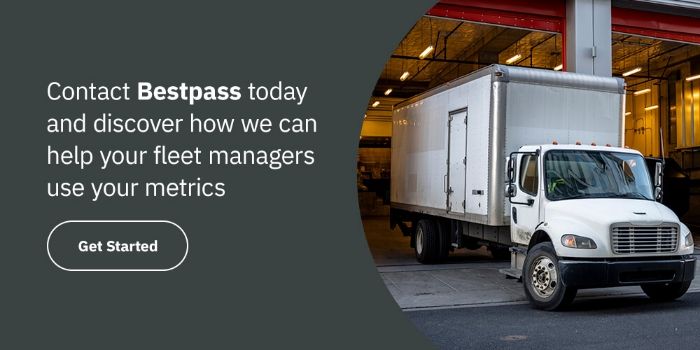
Fleet Metrics You Need to Know
Your data is a powerful tool for your business, including your trucking processes. With so many moving parts and critical information, it can be challenging for fleet managers to analyze and track essential information. Understanding what metrics you need to know can direct your managers' actions for better data insights.
4 Key Fleet Management Metrics
Fleet key performance indicators (KPIs) are measurements companies can use to track performance and improvement initiatives. However, companies must know what will best serve their business and industry when determining their KPIs. When developing better fleet data management, you can choose from several vital metrics to provide multiple types of valuable information.
1. Vehicle and Fuel Metrics
KPIs can help you better understand how well your vehicles perform to reduce related costs and create more efficient processes. There are various costs associated with fuel and trucks that fleet managers can track to optimize resource use, including:
- Fuel cost per mile.
- Parts and vehicle replacement costs.
- Total cost of ownership.
- Miles used per gallon.
- Idle time.
While these KPIs can provide valuable insights that prevent fuel and vehicle overspending, you can use data tracking to gain other essential information, too. Consider measuring and tracking unassigned vehicle mileage and driver assignment.

2. Maintenance Metrics
Maintenance is essential for determining performance, functionality and life span. Your fleet data allow your managers and decision-makers to understand if your company uses maintenance efforts to serve your trucks and drivers best. Some metrics include the following:
- Preventive measures taken.
- Repair rates for vehicles.
- Technician and tow productivity and efficiency.
- Parts and inventory availability and usage.
- Vehicle downtime.
Your maintenance metrics can determine functionality and efficiency. When you want to improve processes, looking at your fleet data can boost performance and operations.
3. Driver Metrics
Your drivers and their habits can provide essential information about your fleet and its productivity. Like vehicles and processes, your employees are investments. Optimizing their efficiency and performance can help you make the most of your resources.
Some driver metrics to measure include:
- Speeding incidents.
- Accidents.
- Habits for harsh braking and accelerating.
- Time spent on site and handling goods for customers.
You can also look at the demographics of your driver population and their employee habits. Analyzing tenure and retention rates can help you understand employee satisfaction and better predict their needs. Low tenure and retention can indicate when you'll need to improve employee benefits or begin hiring.
4. Safety and Accidents Metrics
Your safety measures can increase company efficiency and reduce costs. Measuring and tracking this data can help you protect your assets, from your vehicles and employees to your company's reputation. Some data you can analyze include the following:
- Total number of accidents and repairs.
- Total cost per accident.
- Repairs required per accident.
- Downtime and rentals.
- Property damage.
- Personal injury.
- Liability costs, legal fees and workers' compensation.
When you want to keep your employees and customers safe, access to the correct data can help you identify unsafe processes and determine where to implement better practices.
4 Benefits of Tracking Fleet Data and KPIs
Leveraging and tracking your company's fleet data offers several benefits to companies. When your fleet managers consider using this data type, knowing the advantages can encourage them to invest in the necessary processes and tools.
1. Increase Safety
Your fleet safety measures are necessary to protect your company, employees and vehicles. Accidents can endanger driver lives and result in costly damages and repairs. When you use your company's fleet KPIs to target safety measurements, you tailor improvement efforts directly where you need them.
Some ways to use safety metrics to drive change at your organization include:
- Creating a safety culture: Whether hiring new employees or reaching existing ones, you can use your safety data to show your drivers that safety is important. Through your efforts and messaging, they can better prioritize their health and safety when on the road. You can even consider offering your top safety performers incentives, such as extra days off or small bonuses.
- Directing training efforts: All companies have mandatory safety training to ensure employees have the right resources to help themselves in the field. Many organizations even require employees to repeat modules annually. With safety metrics, you can better target which employees might need additional training and assistance with safety practices.
- Reducing costs: From workers' compensation and equipment repairs to lost customers and public relations, accidents and poor safety measures can increase company expenses. You can use your safety metrics to develop better systems to reduce accidents and injuries for more stable finances.
2. Improve Route Mapping and Delivery Efficiency
Your fleet managers spend countless hours developing delivery routes and assigning drivers to jobs. However, inefficient routes can decrease efficiency and customer satisfaction.
Data tracking can help you better understand your delivery routes to discover the ones that work well and which need evaluation. GPS technology can help you determine where and when lags are occurring, so you can adapt routes to traffic patterns.
3. Optimize Fuel Efficiency
Fuel efficiency is a large portion of fleet spending and budgeting. Your fuel data can provide several essential insights you can utilize to use fuel efficiently and promote better vehicle performance, such as:
- Highlighting underperforming vehicles: Fleet metrics are powerful because you can look at big-picture and individual data. By comparing data from similar truck models, you can assess their performance and better pinpoint
particulartrucks using more fuel. High fuel usage can have many causes, including damaged or strained components. This data can increase repair efforts for quicker care and maintenance. - Optimizing delivery routes: Fuel use can help determine inefficient delivery routes. Tracking fuel use to get to a location compared to similar deliveries to the same site will allow you to assess current systems and better understand your delivery processes.
- Bringing attention to idle times: Fuel use can also determine when your trucks aren't moving but still using fuel. Whether they're stuck in traffic or at delivery sites, you can develop processes, schedules and routes that avoid idle times. Data tracking can point out patterns for strategy implementation and development.
4. Boost Customer Satisfaction
Quicker deliveries that match estimations can result in better service for your customers. When you can deliver your promised results, your customers will increase their trust in your company and processes. Your customers will become more loyal to your brand and products.
Looking for More Ways to Save Your Fleet Money?
When you want to leverage your fleet data to optimize and improve processes, you need the right tools. Bestpass helps truck fleets better understand their toll costs with our software solution. By analyzing your various fleet costs, Bestpass's software provides essential insights related to overspending at tolls.
We work with several toll authorities to connect trucking fleets with discounts. As a centralized platform, data is easy to access and analyze for increased visibility and understanding.
Contact Bestpass today and discover how we can help your fleet managers use your metrics.


